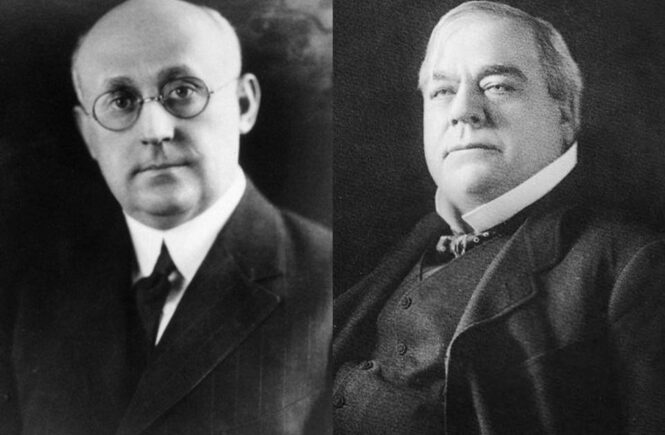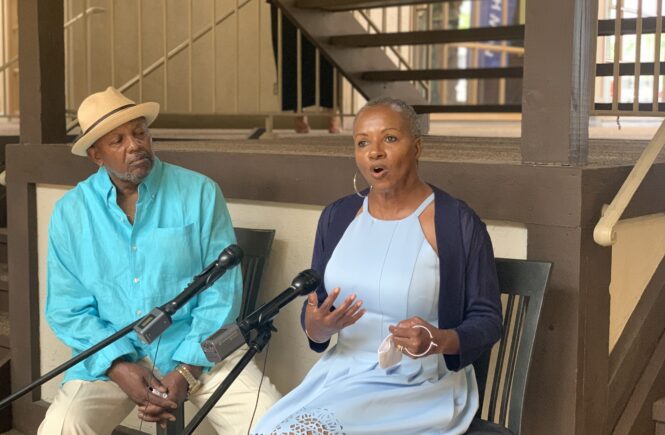The “No Dumping” sign on the utility pole warns of a $1,000 fine or a year in
prison.
It isn’t working.
Across the street, empty milk jugs, countless crushed water bottles, a freshly
dumped white plastic bag and other detritus roam freely along an alley in this
northeast Kansas City neighborhood.
“It’s very disheartening,” said Mark Morales, president of the Sheffield
Neighborhood Association as he adjusted his sunglasses and surveyed the litter.
“Knowing a lot of people in the neighborhood are keeping their homes clean … and you have other residents dropping all the trash.”
It’s one of dozens of “trouble areas” in his neighborhood and throughout Kansas City, as trash piles up despite regular cleanup campaigns waged by residents and the city.
But two initiatives from city officials may offer a glimmer of hope.
▪ A proposal before City Council would provide large trash containers to all
residents, at a cost of $17 million. Officials say those bins would hold more garbage than the current two-bag limit the city has now, so, perhaps, residents wouldn’t feel the need for illegal dumping. And bins might do a better job containing trash so it doesn’t blow around neighborhoods.
▪ A city audit released last week found it takes the Public Works Department an average of 24 days to clean up a dump site after receiving a report. The audit also found that resident satisfaction with illegal dump cleanup is at its lowest in six years. Officials say they can use such data to streamline services and respond to complaints quicker.
TRASH IS POISONOUS’
The East Side of Kansas City gets hit hardest by illegal dumping, said Rachel Riley, president of the East 23rd Street Pac neighborhood association, which held a cleanup on a recent Saturday.
She said the trash problem began going downhill when the city limited trash
collection to two bags a week per household. Additional bags cost $2.50 apiece.
People often drive to other neighborhoods to dump their garbage, especially if they see trash already littering that neighborhood, said Kelly Allen, special projects director for the Lykin neighborhood in the northeast.
That’s known as the broken window theory. George L. Kelling and James Q. Wilson first described it in a 1982 pivotal article, saying neighborhood disorder — such as a broken window — invites more crime.
Each month, Allen said, the association hosts a cleanup. Residents would use four huge dumpsters and start at 8 a.m., working until all the dumpsters were full. The last time, that took just two hours.
“When these resources disappear, it is the lower-income neighborhoods that suffer the most,” Allen said.
She said the two-bag limit seems “burdensome on families that are already
struggling,” pointing to one of her neighbors’ homes where three generations of a family live.
‘STILL A PROBLEM’
Cleanup requests made through the city’s 311 system take about 24 days for a
response, the audit said. But not all requests come through that system.
Some are made informally, with a phone call or message to Public Works Director Michael Shaw. And those are escalated to the city’s illegal dumping investigators.
Shaw said he doesn’t believe there is an “intentionality of things getting faster than anywhere else.” His team is cleaning up sites nearly every day. Sometimes his crews drive by a trash site and simply stop and clean it up, whether or not it’s on a request list.
Shaw said he hadn’t realized how long it was taking to address complaints.
The audit suggested creating goals to improve response times. Shaw said the goal should be 24 to 48 hours.
The audit urged officials to launch a public awareness campaign showing how illegal dumping harms public health and the environment and to remind people about the laws and their consequences.
Jones said his office also conducted audits on illegal dumping in 1996 and 2000.
A new administrative regulation on houseless encampments that require 48 hours’ notice before the city can ask people to leave also affects how public works can clean up sites, city spokeswoman Maggie Green said.
Shaw said his crews pick up 30,000 more tons of trash since 2019, when the city took over trash collection from private contractors.
Shaw said he sees the dumping as a symptom of a larger problem: that people
need more opportunities for disposal.
At one of the city’s problem sites near East 37th Street and Oakley Avenue, Alan Ashurst, an illegal dumping investigator for the city, pointed to a stack of discarded wood, tires and bags. Behind there, a city employee discovered a body last year while investigating illegal dumping.
This site is not one that receives 311 requests but is on the list to clean up once a month, Ashurst said.
“It’s easy to get mad at the city. Just remember we’re not the ones dumping trash out here,” Ashurst said.
Once his workers find trash, they search for evidence in it, knock on doors and try to figure out who is responsible. He said he has written about 1,200 tickets since 2013, with just seven re-offenders.
WHAT’S NEXT
Council members Heather Hall and Melissa Robinson, representing Districts 1 and 3 respectively, introduced an ordinance to buy trash and recycling bins for residents. It would take almost $6.2 million from a reserve COVID-19 stimulus funding and another $10.8 million from the city’s general fund.
After introducing it last week, Hall held up a stack of papers nearly a foot tall — all constituent complaints.
“It’s a huge problem,” Hall told The Star. “And the more illegal dumping, the worse our city looks. When our city looks like it does, then that can also increase crime and just a sense of unrest and people not feeling good about their community. We don’t want that for Kansas City.”
Each bin would hold up to 80 pounds of garbage, compared to the 40 pounds that two trash bags combined can hold now, Robinson said. That extra capacity would help prevent trash and recycling from scattering before the city picks it up.
“It is something we have to get a handle on for so many reasons,” Robinson said. “The quality of life for everyday residents is a basic expectation that you can live in a sanitized environment. … It really impacts the amount of pride that you have in your community, in your city.”

